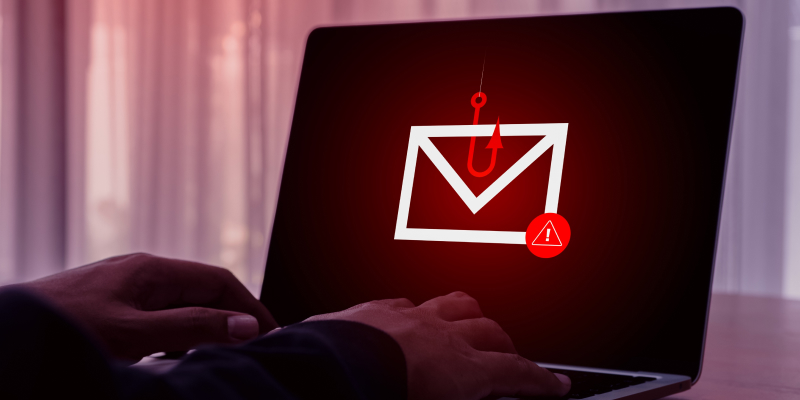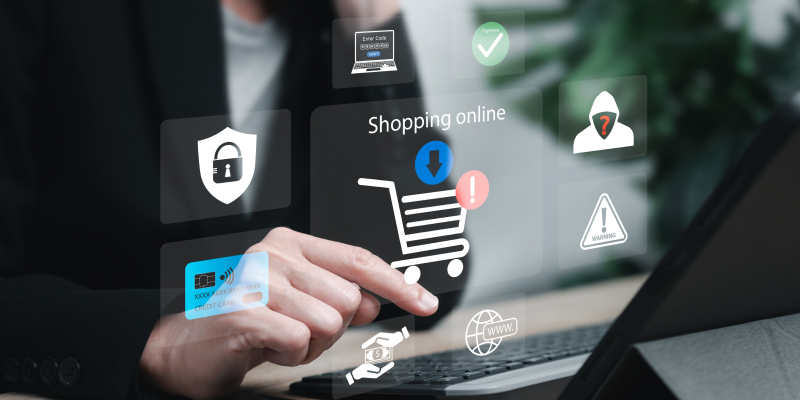Phishing remains a persistent cybersecurity threat designed to steal sensitive information through deceptive attacks. Contrary to common belief, local businesses are prime targets. These digital assaults constantly evolve, and successful breaches often lead to severe financial risk and reputational damage.
For resource-conscious owners, addressing these phishing-related vulnerabilities is a practical shield critical for the business’s survival. Partnering with trusted cybersecurity services can further strengthen defenses by providing expert tools, monitoring, and threat response.
This guide will help you stay alert to common phishing errors and implement proactive cybersecurity measures to avoid phishing mistakes. Through these insights, you’ll secure your operations and cultivate vital security awareness across your organization.
Exposing Common Phishing Pitfalls That Endanger Local Businesses
Many local businesses fall victim to phishing attacks due to preventable cybersecurity mistakes—a dangerous oversight that leaves them exposed through misplaced complacency. While cyber threats multiply, recognizing these critical errors forms the foundation for building proactive defenses tailored to your organization’s needs.
1. Underestimating Cybercriminals’ Target Selection Criteria
Business owners often operate under the false assumption that “we’re too small to be targeted.” This complacent mindset ignores the reality that 87% of SMBs hold valuable customer data that could be compromised in an attack by hackers, from customer payment details to other credentials accessible through basic network penetration. Every unprotected endpoint gives attackers footholds they actively exploit.
2. One-Time Training ≠ Cybersecurity Preparedness
Why is employee training a critical part of preventing phishing mistakes? Because you can’t expect a one-time cybersecurity training session to work wonders for an extended period of time. Employees need regular training on phishing detection and other cybersecurity awareness measures. Knowledge without reinforcement doesn’t stand a chance against rapidly evolving threats. Only ongoing training once every three months ensures your workforce will be well-versed in phishing detection techniques.
3. The Mobile Vulnerability Blindspot (Smishing/Vishing)
“We secure company emails” means little when breaches now start via SMS, using tactics like fake IT support texts urging “urgent password resets.” If you’re not yet training your employees on tactics to avoid falling for phishing coming in via text message, then you leave your company at risk of an infection that originates from that person’s smartphone. Vishing involves scammers making phone calls and speaking directly to the target to deceive them.
4. The False Security of Standalone Defenses
Relying only on email filters mirrors locking your front door while leaving garage entry points wide open. Sophisticated phishing campaigns combine social engineering, encrypted payloads, and legitimate tools, demanding layered protections spanning endpoint detection, identity management, and continuous staff validation protocols.
Transitioning reactive IT stances requires confronting these four realities head-on, especially for resource-constrained SMBs.
Our next section dissects the most common phishing threats and actionable strategies to harden your human firewall.
Proactive Cybersecurity Measures for Critical Phishing Errors Impacting SMB Growth
While technical defenses are critical, front-line staff in local businesses face daily pressures that increase risk tolerance for phishing attacks. So, what are the latest phishing trends targeting businesses? What are three proactive cybersecurity measures? Let’s explore the issues and the solutions.
1. The Speed Trap: When Urgency Overrides Caution
Most phishing attacks attempt to motivate action through a compelling or time-sensitive demand, such as fabricated HR messages about payroll changes or fabricated performance reviews. These prey on the natural human tendency to comply with authority figures under pressure.
Proactive fixes:
- Implement a Pause Rule: Train staff to delay acting on urgent requests for some time to compare sender details against legitimate channels and question anomalies.
- Create “Hold On” Templates: Pre-written responses like “Let me confirm with my manager before proceeding” buy critical verification time for proactive cybersecurity to avoid phishing mistakes.
2. The Visibility Blindspot: Sophisticated Lures in Plain Sight
Basic awareness fails against today’s subtle attack vectors. We’ve entered an era where cloned branding in emails or SMS-based smishing messages can deceive even cautious employees.
Adopt this 5-step verification process to secure your email and data:
1. Check for Typos/Awkward Phrasing: Even minor grammar issues often expose fakes.
2. Hover Before Clicking: Reveal suspicious URLs mismatched from claimed brands like “amaz0nsupport[.]com.”
3. Check Sender Details Closely: Fake “Microsoft Security” alerts from gmail.com addresses? Nope.
4. Verify Caller Identity: Verification demands work both ways—“May I get YOUR callback number for our records?”
5. Report Immediately: Use a designated secure reporting platform to trigger protocol responses.
3. The Isolation Mistake: Silent Threats Multiply Damage
Even with robust policies, breaches escalate because employees hesitate to report potential mishaps. Cultural stigma around “careless mistakes” breeds dangerous secrecy.
Break the cycle with:
- Reporting Protocols: Publicly celebrate staff who expose threats, reframing reports as organizational successes.
- Threat Submission: Streamline ticket creation to eliminate procedural friction hindering transparency.
- Monthly Vigilance Awards: Offer gift cards for top threat identifiers to reinforce cultural expectations.
Empowering your team transforms human fallibility into your strongest defense layer. But remember—sustainable proactive cybersecurity to avoid phishing mistakes requires synchronizing individual empowerment with comprehensive system safeguards.
Next, we will detail how technical controls are integrated with this human-centered strategy.
Also Read: Tailored IT Strategy & Customized IT Solutions for Statesville’s Small Businesses
Implementing Essential Proactive Cybersecurity for Robust Defense
For today’s business owners facing relentless cyber threats, implementing key proactive cybersecurity measures establishes a “Defense-in-Depth” approach—multiple protective layers working together to safeguard your operations.
To that end, what is the best way to prevent phishing attacks? The critical steps to prevent phishing are in-depth and absolutely watertight. Here are the proactive measures that can protect your business from evolving phishing attacks:
Step 1: Strengthen Access Points
Protect your business by mandating complex passphrases that employees can remember but attackers can’t easily crack. For example, substitute generic passwords like “Office2025” with memorable phrases such as “PurpleRains$ProtectMyCloud9!” Complement this with Multi-Factor Authentication (MFA) to lock out unauthorized access—even compromised credentials become useless without that second verification step via text code or biometric scan.
Step 2: Deploy SPAM Filters
Secure your email and data with SPAM filters that detect viruses, blank senders, malicious drafts/emails, or suspicious outbreaks. These filters also detect and prevent phishing emails from infiltrating various email accounts within the organization.
Step 3: Maintain System Vigilance
Set calendar reminders to patch vulnerabilities every 30 days. Consider this maintenance your virtual armor plating. Outdated systems invite hackers to exploit known weaknesses, especially after stealing employee credentials through phishing.
Priority update targets:
- Operating systems (Windows/macOS)
- Financial software platforms
- Email client applications
Step 4: Enforce Operational Protocols
A robust verification-seeking policy outlining requirements and tasks should be a mandatory part of your cybersecurity protocol. All employees must complete this set of tasks before sharing any files, fund transfer information, and critical data. Allowing unrestricted access to sensitive data can be a major blunder. Hence, organizations should limit data access only to those employees who genuinely need it to do their jobs.
Step 5: Simplify Security Hygiene
Leverage these accessible (often free) tools to avoid costly phishing mistakes:
- Laminated QR codes linking to phishing reporting portals
- Pre-scheduled phishing simulations mimicking industry-specific lures
- Automated patch alerts through Windows Update or calendar reminders for security checks
While establishing these proactive cybersecurity measures builds critical infrastructure protection, their full potential emerges when paired with vigilant, security-aware teams—the ultimate firewall against phishing.
Fostering a Vigilant Security Culture to Bolster Phishing Prevention Efforts
While robust firewalls and cutting-edge email security solutions provide essential technical safeguards, their effectiveness multiplies when fused with an engaged organizational culture of security. This shift is key to proactive cybersecurity to avoid phishing mistakes, transforming your employees into a vigilant “human firewall.” Cultivate this shield through these core actions:
Continuous, Engaging Training
Move beyond annual checkboxes. Implement ongoing employee/staff security awareness training with microlearning and practical drills where they apply RED FLAG criteria to spot fakes.
Constructive Phishing Simulations
Use phishing simulations as learning tools. When employees/staff err, provide immediate, constructive feedback on missed red flags, not just a “fail” notice.
Simplified Reporting
Why is an easy-to-use reporting mechanism for phishing crucial? Swift reporting of suspicious emails drastically boosts your cyber resilience by enabling rapid response.
Daily Integration and Leadership Example
Weave security into “business as usual.” Leadership plays a massive role, especially in educating the employees by championing initiatives like phishing roundtables and showcasing weekly “Security Wins.”
Rewarding Vigilance
If you aim to build a true security-first mindset, recognize and reward employees who proactively identify and report threats.
Embedding these practices—from dynamic training and simulations to active leadership and recognition—into your organizational security culture fortifies your human defenses. This holistic approach is central to proactive cybersecurity to avoid phishing mistakes and strengthens overall cyber resilience.
Now, let’s synthesize these human and technical strategies into actionable takeaways for comprehensive defense.
Case Study: Proactive Cybersecurity Defeats a Phishing Attempt
To illustrate the power of a proactive, layered cybersecurity approach, let’s examine how CMIT Solutions assisted a client facing a surge in email phishing.
The client, a manufacturing and industrial services company in Southwest Virginia, supports 75 users across a Microsoft 365 and Windows Workstation environment with both remote and onsite operations.
The Challenge: Escalating Phishing Threats
The client saw a sharp rise in sophisticated phishing emails targeting accounting and operations. These emails often:
- Spoofed vendor and internal domains.
- Contained malicious links and credential harvesting forms.
- Bypassed basic spam filters.
This resulted in:
- 5–10 suspicious emails reported daily
- One credential compromise via a malicious link
- Over 20 IT hours per month spent on manual phishing response
The Goals: Enhanced Security and Efficiency
The objectives were to:
- Protect users from phishing, impersonation, and spoofing
- Reduce the IT time spent on email threats
- Improve user awareness and phishing response
- Increase visibility into email threats
The Solution: CMIT Solutions’ Multi-Layered Strategy
CMIT Solutions implemented a comprehensive strategy:
1. Advanced Email Security
- Deployed Barracuda Email Security Gateway.
- Enabled external sender warnings, link protection, and attachment sandboxing.
- Enforced DMARC, DKIM, and SPF for email authentication.
2. User Training and Simulation
- Launched quarterly phishing simulations.
- Provided micro-training on threat indicators.
- Reinforced best practices with monthly security newsletters.
3. Automated Incident Response
- Configured automatic email quarantine and alerting.
- Provided immediate notifications to the internal IT team.
- Integrated with CMIT’s SOC for real-time analysis and mitigation.
The Results: A Complete Overhaul
The proactive measures yielded significant improvements:
| Metric | Before Implementation | After Implementation |
|---|---|---|
| Phishing Emails Reported | 5–10/day | <1/day |
| User Click-Through (Simulation) | 28% | 6% |
| IT Time on Email Threats | 20 hrs/month | <5 hrs/month |
| Credential Compromises | 1/month | 0 (in 6 months) |
Key Outcome: This strategic intervention drastically reduced phishing threats, enhanced user vigilance, and restored IT productivity, demonstrating the effectiveness of combining advanced technical safeguards with consistent employee education.
Your Path to Sustained Phishing Protection for Your Local Business
Phishing is a costly reality for local businesses. Hence, its evolving tactics demand attention. Therefore, proactive cybersecurity to avoid phishing mistakes isn’t just tech jargon; it’s your essential toolkit, combining tools, education, and policies. This helps you:
- Significantly reduce email breach risks.
- Develop empowering employees who confidently spot threats.
- Build lasting cyber resilience.
This isn’t a one-time fix; it demands an ongoing security-first mindset, making vigilance part of your DNA.
Don’t fall victim to phishing scams. Start with one step, like reinforcing verification, and build on it. At CMIT Solutions of Statesville, Mooresville and Salisbury, we provide proven business IT solutions focused on preventing phishing mistakes. Our proactive cybersecurity measures help protect your business.
Connect with us today to secure your operations with our expert cybersecurity services!



